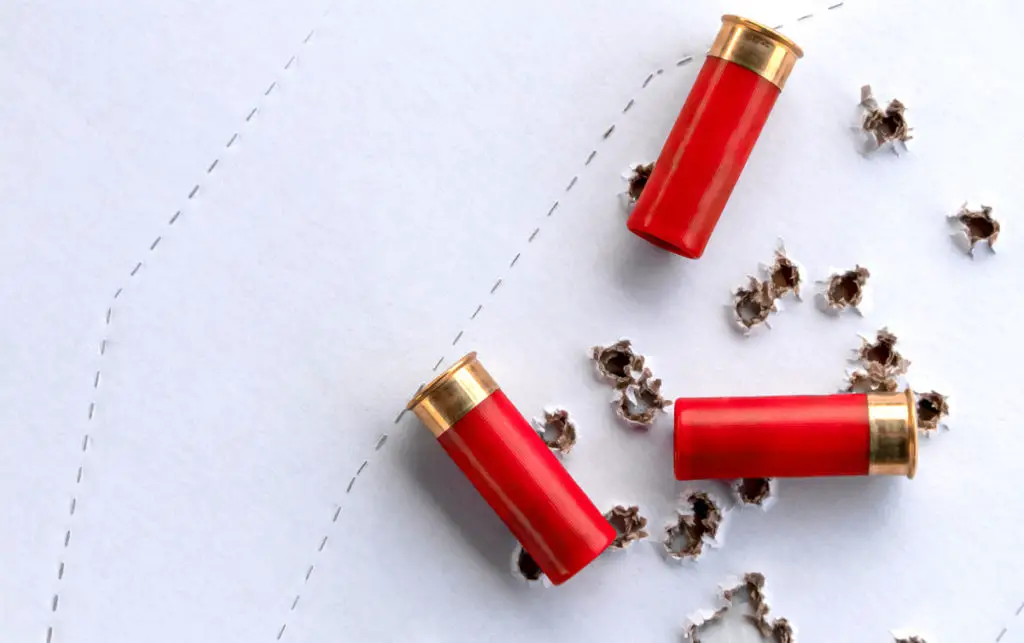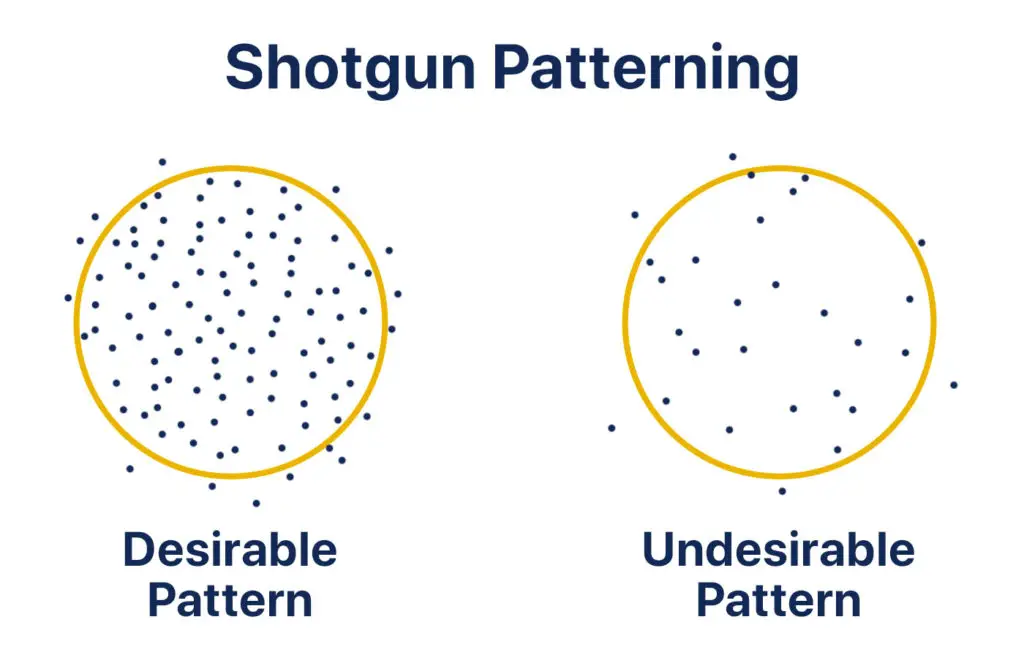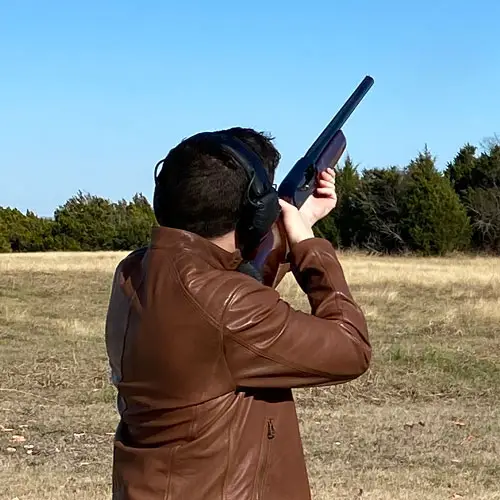Hunting small and big game with a shotgun is an art and a science. Non-hunters make the mistake of thinking that all they need to do is take their shotgun into the woods and shoot something. While this is partially true, you’ll have much better luck in hunting when you take the time to prepare your shotgun correctly. Shotgun patterning is a big part of preparation.
All shotguns have slight differences in how they shoot. Even a microscopic difference can mean the difference between a successful kill shot and missing or wounding your target. Shotgun patterning is essentially like sighting in your shotgun for shooting. It’s impossible to know precisely where each pellet will go when you shoot, but patterning lets you see where the bulk of the pellets will end up.
How to Pattern a Shotgun (Step by Step)
Patterning your shotgun will let you know what type of ammunition you should use and how close you should be to your target. Patterning isn’t difficult. It simply takes a little time and patience. Here’s how you pattern a shotgun using plain sheets of paper.

- Fire one shot at the piece of paper from the distance you expect to be hunting at. So if you’re hunting birds from an expected range of 35 yards, you should shoot your pattern target from 35 yards. Perform this test two or three times, each time using a fresh sheet of paper. Use paper or cardboard that’s roughly four feet by four feet.
- On each piece of paper, draw a 30-inch circle around the area with the most holes. This area indicates where the bulk of the pellets hit and will do the most damage on an animal.
- On each of the three targets you just shot, count the individual pellets that hit inside of the 30-inch circle. Make sure to write the number down somewhere to avoid losing track.
- Calculate the percentage of the load that is expected to land in a 30-inch circle at the distance that you expect to be from your prey. Average the pellet counts within the 30-inch circles. To do this, add the three counts from step 3 and divide the sum by three or however many targets you shot. Then divide the average pellet count by the number of pellets in the load for the ammunition you are using, and multiply this result by 100. This should give you a percentage of pellets in your circle. Ideally the number should be 55% – 60% of the pellets from your shell.
- Continue patterning and practicing by using different chokes, loads, and combinations of the two until you get the result that you’re looking for. Remember, it all depends on what you’re hunting and how far you plan to be from your target.

By using this information, you can determine if you’re using the right ammunition or if you should opt for a different one.
Things to Consider When Patterning a Shotgun
There are three main things to consider when patterning a shotgun, and here they are.
The Choke You’re Using
Your choke plays a big role in the pattern your pellets will take. If you’re using an adjustable choke, you may not have to change ammunition but rather switch your choke. You should practice several times with different chokes until you find the right one.
Your Dominant Eye
Most people will instinctively know which eye is their dominant eye. It’s important to pattern your shotgun using your dominant eye because shotguns don’t have the same type of sights that rifles do.
Pellet Flight
Pellet flight is primarily determined by the choke you’re using as well as the type of shotgun you have. The only way to know exactly what the flight of your pellets will be like is to practice patterning your shotgun.
FAQ
No two shotguns shoot the exact same. Patterning helps hunters know the pellet density and positioning to expect from their shotgun. This knowledge increases the odds of making a perfect kill shot and inflicting the most amount of damage possible on their prey instead of simply wounding it by shooting from too far off.
Without patterning, hunters are essentially making an educated guess about where their shot will go which could result in a lot of maimed birds that aren’t killed. If you shoot at birds that are too close to your effective range then the meat could be destroyed due to too many pellets entering the bird.
When patterning a shotgun, the goal is to produce a pattern of pellets with even density and a sufficient percentage of the load within a 30-inch circle.
In other words, you want to figure out what type of ammunition will deliver the most pellets to the center of your target from the distance you’ll be hunting at. The goal is always to inflict maximum damage upon impact.
When you pattern your shotgun, you want to stand however far away from the target that you expect to be from your quarry. If you’re hunting birds from a distance of 35 yards, then you should be 35 yards from your targets when you’re patterning. However, if you’re hunting turkeys and expect to be closer to 50 yards away, you should pattern from that same distance.
You’ll likely have to use different ammunition if you’re shooting from 50 yards as opposed to 35 yards, but patterning will tell you for sure.
The percentage of pellets within the 30-inch circle on your target should be 55% – 60%. Anything less than that will decrease the likelihood of hitting your target. If you plan to hunt from a distance of 35 yards but your patterning results in less than 55% of the pellets hitting the center of the target, you should change your ammunition. Patterning is the best way to ensure accuracy and success when hunting with a shotgun.
You should also be aware of how many pellets each shotgun shell contains when you’re patterning. Knowing this number, as well as how many pellets end up inside the 30-inch circle, is how you calculate the percentage. Take the number of pellets in the circle and divide it by the number of pellets in each shell to determine the percentage.

Joseph has been hunting for most of his life. Some of his best memories were growing up sitting in a treestand or a blind and waiting for a monster buck to come along. His main focus has been deer hunting, typically with my trusty 20 gauge shotgun.
